A guide to enhance your blog content strategy

It takes a lot to create modern digital experiences. Today content plays a big role in creating engaging customer interactions that your users would appreciate.
If you're working with digital, I guess you work a lot with digital content marketing as part of your digital marketing strategy. Content is located everywhere on your website, but of course when we are talking about content that supports your thought leadership, we are most likely talking about the blog section of your site.
For us at Arekibo, our blog is a very important section not only because it allows us to showcase our news, projects and expertise, but also because it remains the main driver of monthly organic traffic to our site, and together with the campaigns, serves as a strong lead generation channel. In the beginning of last year, we did extensive work internally at Arekibo to determine what content we wanted to share in our blog to reach these two goals.
Since then, a year and a half after adopting our new content strategy, we managed to significantly increase both: the number of monthly web enquiries and monthly traffic to site, which is why today I am going to share with you a step-by-step guide on how to select topics for your web blog.
I am going to do this exercise using the example of an Irish company that you all know – Ryanair. They don’t have the blog section on the site at the moment, but they are already now creating content for some of the topic areas that I will soon uncover. Today let’s imagine they were about to introduce a structured content marketing approach and a brand-new blog section, here is a simplified version of how I would go about it.
Let's begin!

Step 1: Identify the readers
The main question to answer: Who are we writing for, and why?
If blogs are the main elements of your lead generation driven content strategy, then your ultimate readers are your customers. For B2C businesses, they would be your end buyers, represented by the different customer groups, formed of the users of the same age, geographics, use case, etc. For B2B businesses, the buyers are then other businesses, however within the businesses I would advise you to identify the personas in the 2 key groups: decision makers and decision influencers.
In case you are using your blogs to increase your brand awareness, the readers of your blog might as well be your investors, partners, future recruits, students and other. It is important to understand who your main readers will be, and why should they be reading your content, because this will further determine, what kind of content (topics and formats) you should be creating.
Ryanair example:
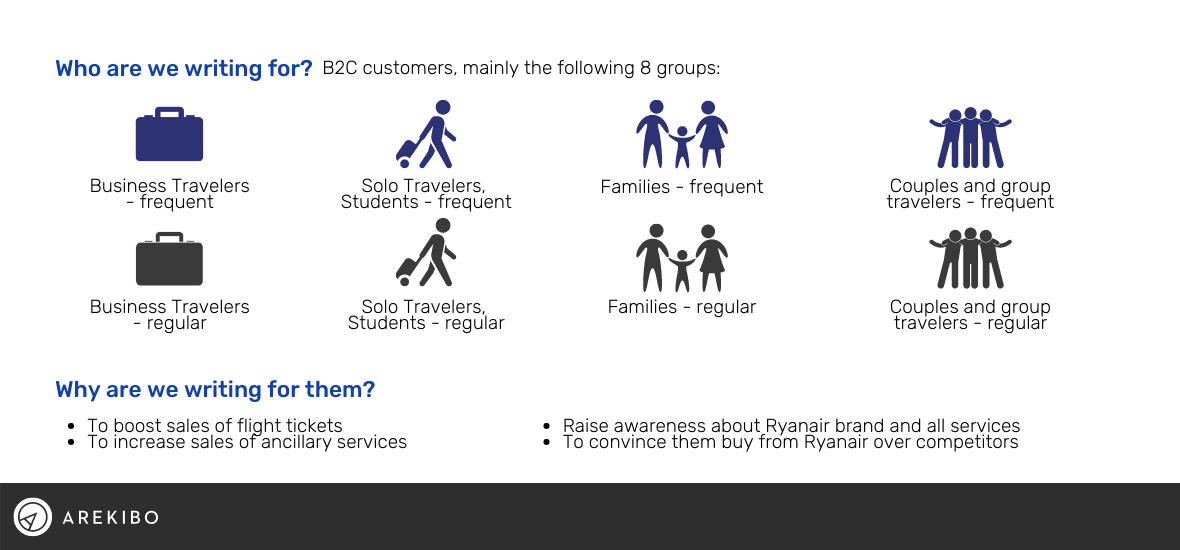
Step 2: Understand your readers
The main question to answer: Who you are writing for? What are their pains, gains and dreams?
To be able to write blogs that your audience would find helpful, engaging and fresh, you need to understand them a little bit deeper. For that purpose, I would suggest using the model of value proposition design, that outlines our customers’ pains, gains and jobs to be done.
Value proposition canvas:
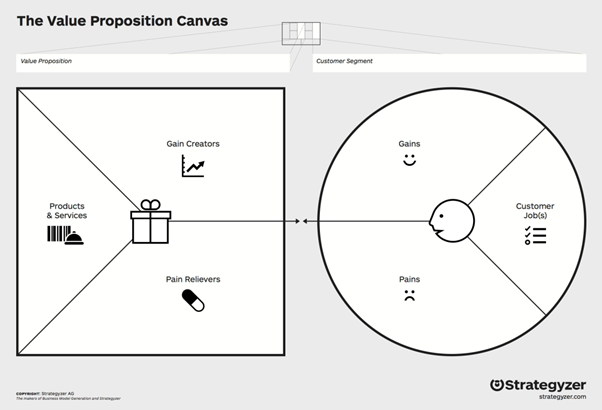
Ryanair example:
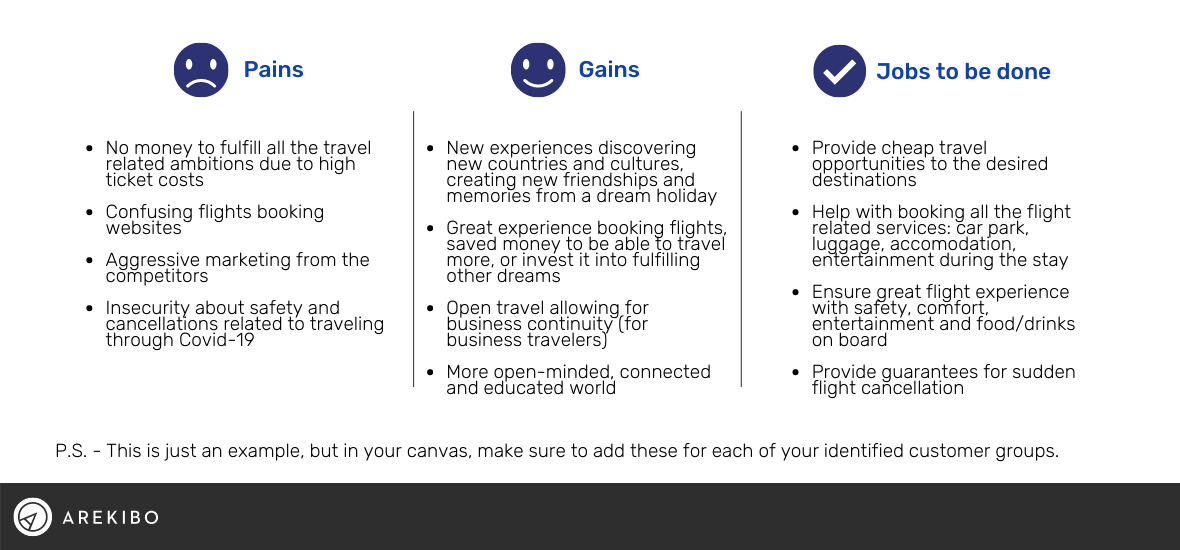
Step 3: Define your core value proposition
The main question to answer: What are your key services and expertise?
Now it’s time to look at what unique expertise or value add you are able to provide for your customers? First of all, it is the core value proposition of your business – what are your core products and services, that solve your customers’ problems, or what do you do to make money?
Another way to think about your core value proposition, that could be covered in your blogs, is to think about what makes your business, product or service unique? Your USPs (unique selling points) are what helps your business stand out, and make your clients choose and appreciate your company, so it is definitely worth covering them in your blog.
Ryanair example:
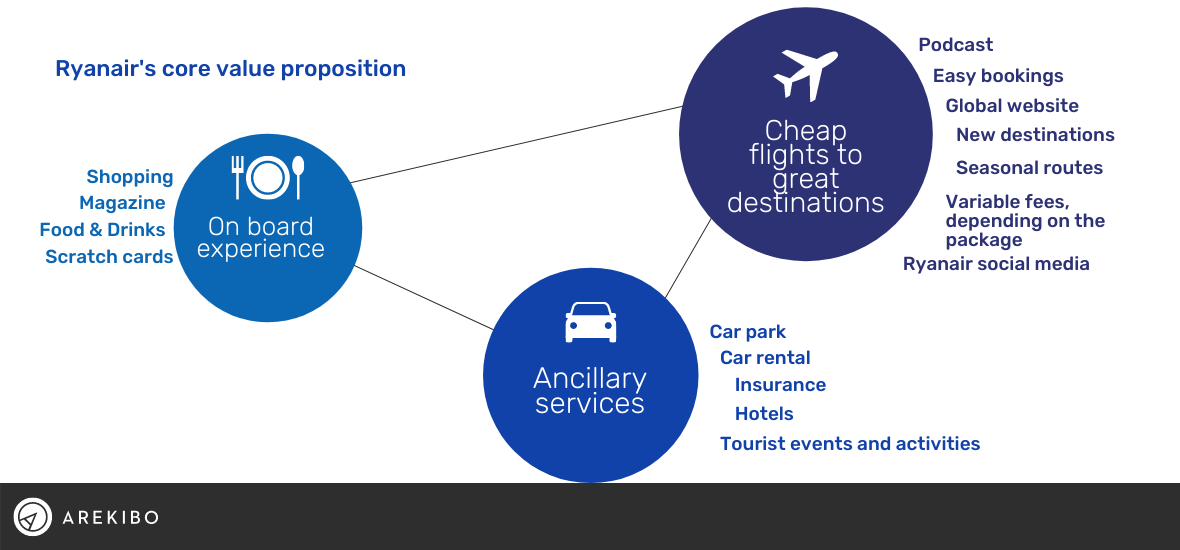
Step 4: Create the theme hubs and build the hubs matrix
Main action: Build the Hubs Matrix
Now when you know both: your customers with their pain points and dreams, and the key elements of your value proposition, you should connect them both in what I call “Content Hubs Matrix”. The content Hubs Matix allows you to see the intersections between your customers pains and your services, which then already gives you plenty of blog topics ideas.
As part of our content strategy at Arekibo, we also plan our blogs against 4 types: educational (explaining some phenomenon, product or a service), entertaining (usually short blog posts, that are fun, positive and visually appealing), inspiring (these blog are about thought leadership, new trends in the industry, or about the aspirational future of your business, etc), and convincing (these blog posts are accompanied by clearly stated CTA and encourage the readers to do a certain action after reading the blog). Read more about the content types matrix I use here.
Content Hubs Matrix template:
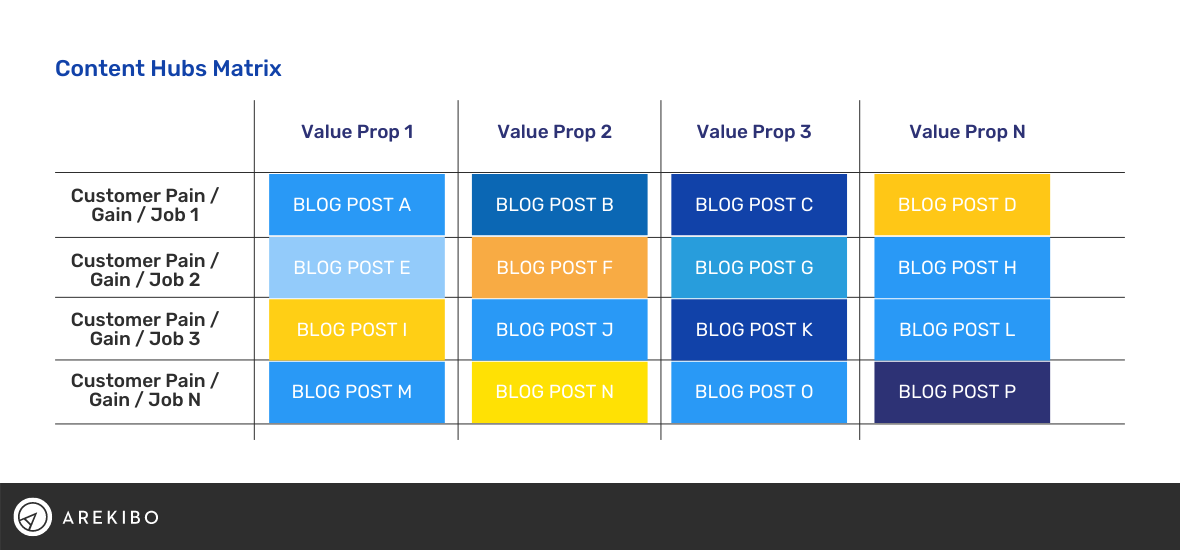
Ryanair example:
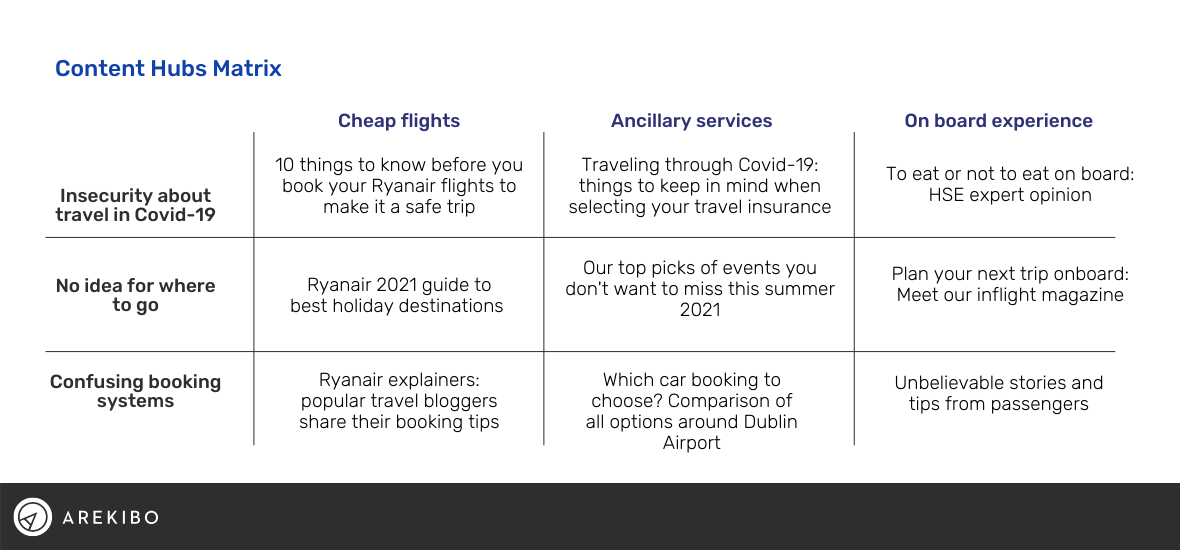
Step 5: Enrich your blog with trends and events
Main action: Monitor the trends and ongoing marketing events to the Matrix
I work in the area of digital marketing, and this field is constantly evolving. I imagine your experience is similar to mine, and wherever you work, the innovation and change for the better are following you, making you adapt and grow. I think change is a good thing, so as a way to ensure your content is relevant and up-to-date, do some research and try adding some of the recent industry developments and how they affect your business, your value proposition and your customers into your blog. As mentioned earlier, the trends will help you populate the “inspire” and “entertain” sections of your blog.
Here are 8 trends, that would be relevant for Ryanair, all of which could be reflected in their blog. They could be used as separate topics, or as added rows into the Content Hubs Matrix:
- The boom of domestic tourism
- Increased COVID-19 safety demands by consumers
- 30% increase in solo travelers
- Travelers crave local experiences as never before
- Travel tech adoption accelerates (AI, AR, VR, service robots, chat bots, messenger and whatsapp integration and more, mobile and web-based apps for booking)
- Consumers blend business and leisure travel with WFH prolonged
- Raising awareness for travel sustainability
- Electric air travel goes mainstream
Tools to help you research the topics
There are also several great tools to help you come up with blog topic ideas, here are just a few:
- Free blog topic generator: https://www.hubspot.com/blog-topic-generator
- 190 templates to make catchy blog headlines: https://raelyntan.com/catchy-headlines/
- Tool to research similar blog topics, searched by people: https://alsoasked.com/
- Discover what exactly people are asking about certain terms: https://answerthepublic.com/
Once you have built your Content Hub Matrix, and started writing your blogs, before you push them live, make sure every blog is SEO and accessibility optimised.
I hope these steps will help you achieve a balanced blog portfolio, that will help you achieve your content marketing goals, and will truly delights your customers, making them want to visit your blog again, and again, and again. If you have any further questions about the topics, you can always approach me on LinkedIn.
If you need help reinventing your digital presence or if you want to get more output from your website content, contact us today.
/hurting-ai-feelings.webp?sfvrsn=ea50dc79_1)
/why-ai-seo-matters.webp?sfvrsn=b70a9daf_2)
